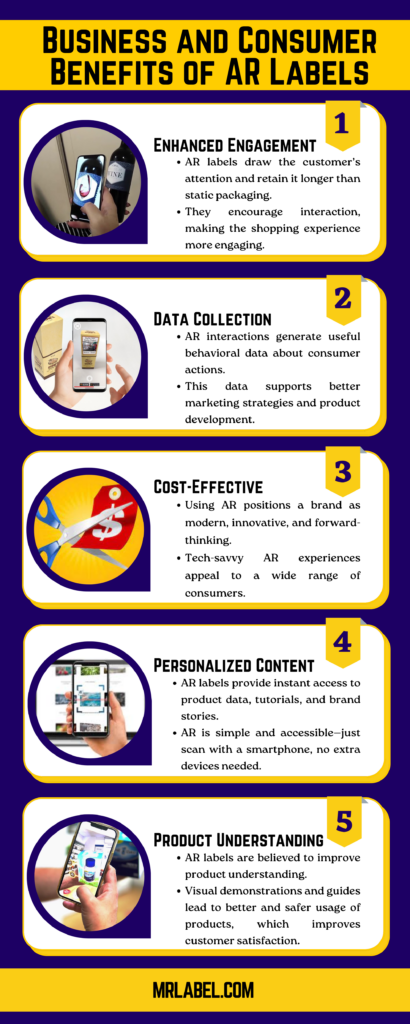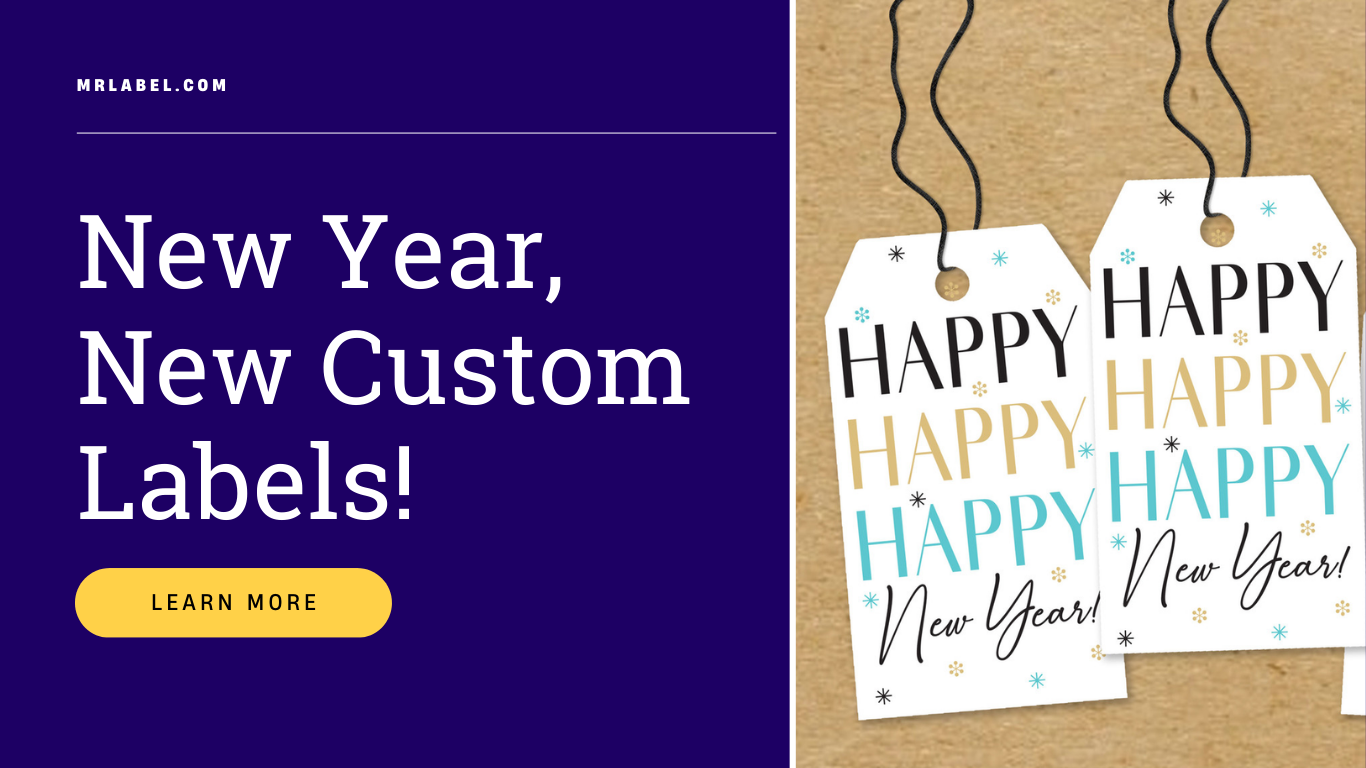In the ever-evolving world of marketing and product packaging, one innovation stands out for its ability to bridge the physical and digital divide: Augmented Reality (AR). As the boundaries between real and virtual blur, augmented reality promotional labels offer businesses a dynamic way to connect with consumers, turning static packaging into immersive brand experiences.
This powerful tool is not just a novelty, it’s a strategic game-changer that redefines how companies engage, educate, and entertain their customers at the point of sale.
We will discuss the transformative potential of AR on promotional labels, how it works, its real-world applications across industries, and why it is a must-have for future-focused businesses.
What Is an Augmented Reality Product Label?
An Augmented Reality (AR) product label integrates digital content with a physical product’s packaging, creating an interactive experience for consumers. By scanning a QR code or a marker on the label using a smartphone or tablet, users unlock a world of content, 3D animations, videos, sound effects, tutorials, games, and more, directly superimposed over the real-world product.
Unlike traditional labels, which are limited by space and static design, AR labels are gateways to unlimited digital storytelling. Whether you’re a winemaker conveying a vintage’s rich heritage, a skincare brand offering virtual consultations, or a tech firm providing product assembly instructions, AR labels enhance your message without cluttering the packaging.
How AR Technology Works for Labels and Packaging?
The use of on packaging is simple, yet it gives a technological and sophisticated look to the brand. However, it is also effective and useful for an efficient workflow. AR technology works for labels and packaging by designing a digital experience for consumers. The brand creates digital assets, such as 3D models, animations, explainer videos, or interactive interfaces.
Moreover, AP technology can leave a mark on the market. These assets are linked to physical triggers, and that will fascinate people. Physical triggers such as a QR code or a marker print, can make the product more memorable.
Another use of AR technology is that it helps scan the label. The consumer uses a mobile device equipped with an AR app or a browser-based AR viewer to scan the label. Many businesses use AR technology for labels and packaging through AR activation. The AR content can create a blended experience for consumers.
Consumers engage with the content, be it watching a video, swiping through features, or playing a branded mini-game. This seamless interaction between the physical and digital elements captures consumer attention more effectively than traditional labels ever could.
Business and Consumer Benefits of AR Labels
The benefits of AR labels can be better understood if we specify their use. If you are implementing these labels in your business, you will see enhanced engagement. AR labels draw the customer’s attention and retain it longer than static packaging. Moreover, there will be a higher conversion rate. Interactive content can positively influence purchasing decisions by building trust and offering deeper product insights.
Another benefit of AR labels for business is that data collection becomes easy. AR interactions generate behavioral data, giving brands insights into consumer preferences and decisions, making patterns. For example, if you are selling fruit beverages, you will get to understand which people are buying, what is their budget, what kind of flavors they like and much more.
AR labels are a cost-effective way of communicating with consumers. Brands can deliver extensive information digitally, reducing the need for large manuals, brochures, or excessive packaging. Last but not least, these labels are a tech-savvy way to spread brand recognition. AR helps position your brand as innovative and forward-thinking in a crowded market. If you introduce an AR label on a particular item, people of all ages would be interested in trying to get it.
If you consider the use of Augmented Reality for consumers, it works in many ways. First of all, it will give you the information, rich experience you want. AR labels provide instant access to detailed product data, tutorials, and brand narratives. Moreover, these labels add entertainment value. Shopping becomes an engaging experience rather than a mundane task. There are a lot of ways in which AR labels mean personalized content. AR technology can be tailored to user behavior, preferences, or even geolocation for a bespoke experience.
We all can tell that AR technology is simple to use. With smartphones, you can do a lot of things that one could only imagine a decade ago. AR content is accessible with a simple scan, which means your phone can be your wallet and there will be no special devices needed.
Additionally, AR labels are believed t improve product understanding. Visual demonstrations and guides lead to better, safer usage of products, especially in pharmaceuticals and manufacturing.
Real-World Applications of AR Labels Across Industries
-
Winemaking
The wine industry is embracing AR to tell the stories behind their bottles. A notable example is 19 Crimes, an Australian brand that animates historical characters associated with each wine label. Consumers scan the bottle and watch lifelike digital stories unfold, connecting emotionally with the brand. This storytelling approach resonates particularly with Millennial and Gen Z consumers, who prioritize experience over taste or reviews.
-
Pharmaceuticals
In a field where accuracy and clarity are paramount, AR labels deliver interactive 3D instructions on medication usage, side effects, and safety. This minimizes misuse and supports patient education. For instance, scanning a health label might show an animated guide to using an inhaler or taking the correct dosage of a complex medication.
-
Manufacturing
Brands like these have introduced AR, enabled labels that offer on-demand access to assembly instructions, safety tips, and troubleshooting guides. This not only enhances user experience but also reduces support costs and product misuse.
-
Retail and Fashion
Retailers have innovated in-store experiences using AR. Customers scan designated spots to see models showcasing the latest clothing line in AR, blending the best of physical and online shopping. Virtual try-ons and product previews create immersive, memorable shopping experiences.
-
Personal Care and Cosmetics
AR in skincare allows consumers to scan a product and get a virtual skin consultation. Based on user inputs or facial analysis, the AR system recommends how to use the product and highlights ingredient benefits. This enhances trust and encourages informed purchases.
Why AR Labels Are the Future of Packaging?
The future of branding is experiential. In a world flooded with stimuli, attention is a currency, and AR labels are a powerful way to earn and keep that attention. Traditional packaging may inform, but AR packaging informs, involves, and inspires.
Moreover, as technology adoption becomes more widespread and accessible, even small and medium businesses can integrate AR without significant investment. Tools and platforms are becoming more user-friendly, scalable, and cost-effective.
Final Thoughts: Bridging the Gap with AR
Augmented Reality promotional labels aren’t just a tech gimmick; they’re a strategic evolution of how brands communicate and connect. They transform packaging into a dynamic storytelling platform, offering measurable ROI in the form of engagement, loyalty, and sales uplift. In an age where customer experience is the key differentiator, AR bridges the physical, digital divide to create a new standard in packaging and marketing.



